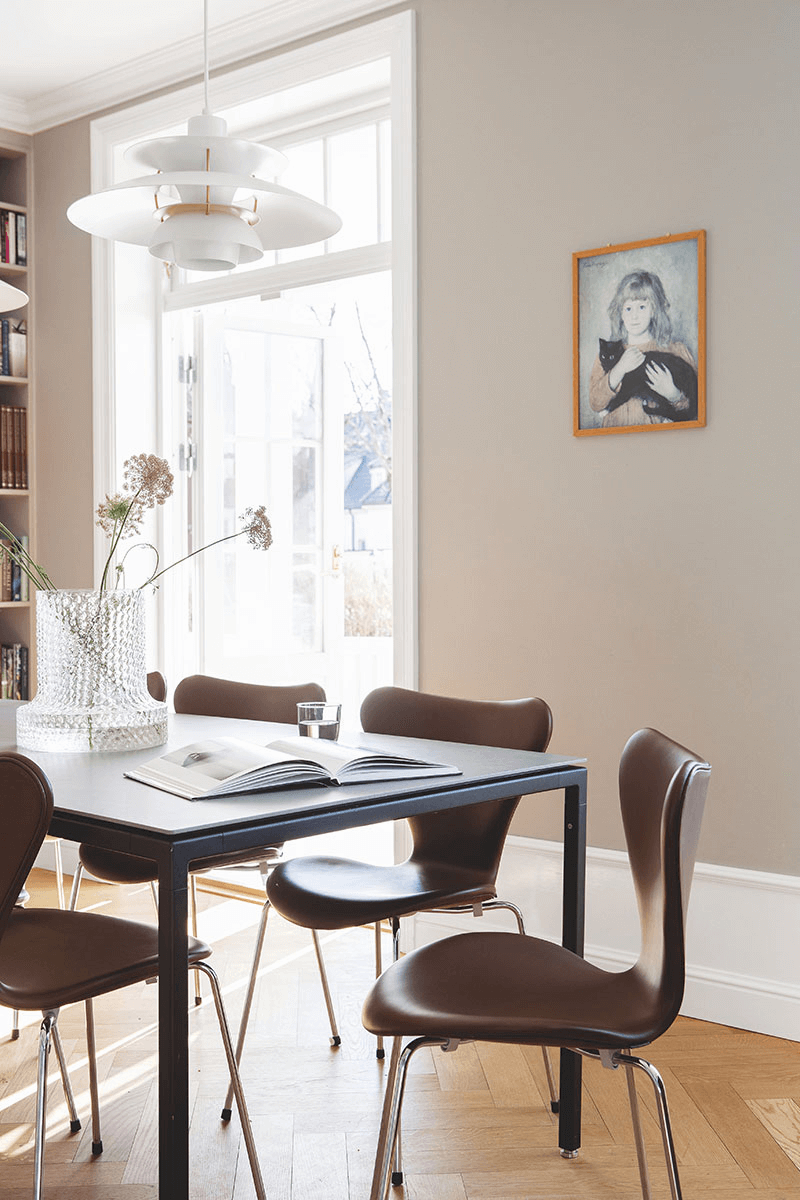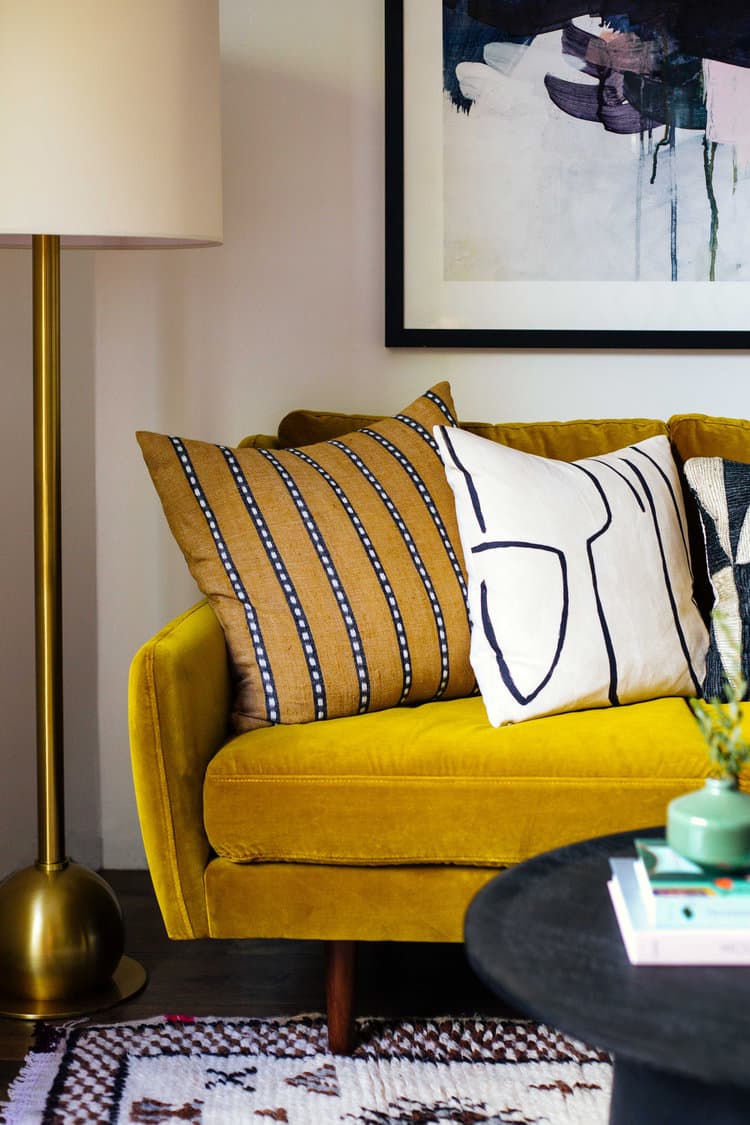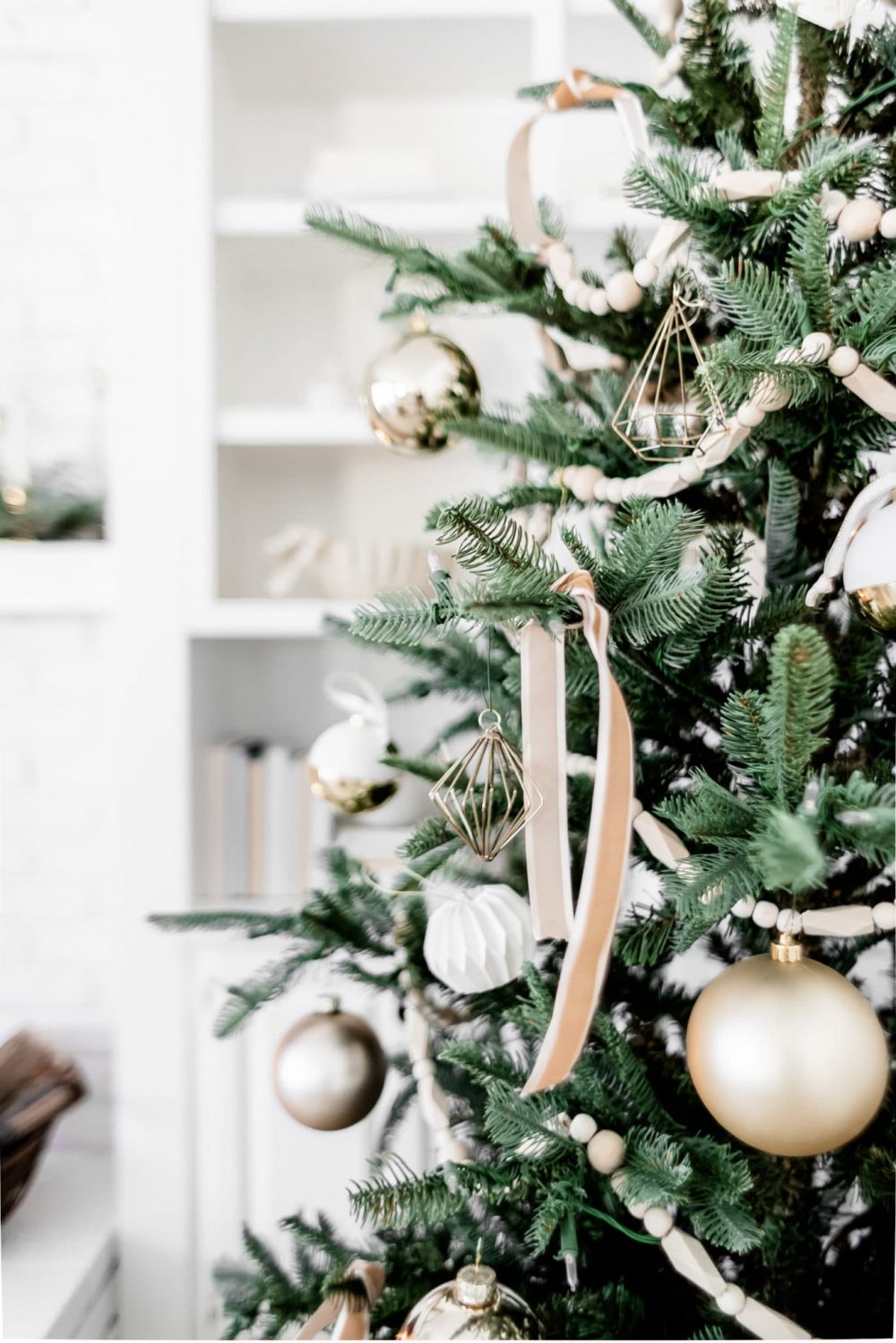Vintage Mid Century Modern Furniture: 5 Stores We Love
Scouting out vintage classic pieces and antiques for your home has just become easier.

Scandinavian has become a to-go design choice of our time; its popularity has soared and understandably so. The term itself conjures an image of simple, clean aesthetics, white walls, and neutral-coloured furniture that aligns beautifully with minimalist decor. The style is loved by many and can be achieved in any home affordably. No matter your budget or size home, the Scandinavian way of living works with you to design a space that is your sanctuary to come back after a long day.
A style is known for its simplicity, Scandinavian interior design can be defined by its minimalistic look (although not to be mistaken for minimalism), using a rich blend of textures and a soft selection of hues to create a warm, cosy feel.
Much like the modernist era, Scandinavian design looks to functionality and utility to influence the physicality of a room with a few nooks in between. You’ll notice a minimal approach to furniture when it comes to Scandinavian homes, allowing light and air to move around the room seamlessly. That said, the concept of “beautiful things that make your life better” ripples throughout Scandinavian design qualities, therefore, making it as much about functionality as it is about beauty.
When we refer to Scandinavian design, we refer to the collection of northern European countries including Norway, Sweden, Denmark, Finland, and Iceland that make up Scandinavia. What has since become an interior phenomenon, Scandinavian design has its roots in a wealth of history dating back to the 1800s and later flourishing during the early 1900s.
In 1915, a Danish company for decorative arts launched the magazine Skønvirke (literal translation “Graceful Work”) to showcase local craftsmanship. The magazine was created to rival the longstanding art movement, Art Noveau, known for its exclusivity towards the rich and elite. During this time, social commentary on the topic continued and pressured the arts to pave the way for emerging designers, who showcased a more accessible concept: Art Deco.
The Art Deco philosophy was highly influenced by the evolution of industrial machinery and the new possibilities they brought to the world of design. However, for a long time, this did not ripple through into Scandinavian design, as designers looked to preserve the craft traditions and functionalism that were ingrained in the Scandinavian soul.
In the 1930s, designers and artists including Alvar Aalto, Borge Mogensen, Verner Panton and Maija Isola came together and established the Golden Age of Scandinavian Design. Each inspired by the concepts of Constructivism, Functionalism, and Surrealism, they paved the way to what would be Scandinavian design’s iconic milestones. Renowned collections emerged that continue to be celebrated today including Verner Panton’s Panton Chair; Hans Wegner’s Wishbone Chair; and Kaare Klint’s Safari Lounge Chair to name a few.

You’ll notice that much of the designs combine elements of Constructivism, Functionalism, Minimalism, and Surrealism – This dynamic outlook on interiors took Scandinavian design globally. As Nordic designers began to flock to exhibitions to showcase their creations, the world inevitably fell in love with them. The term ‘Scandinavian design’ originated from a design show with the same name that eventually travelled across the United States, as well as Canada, during 1954 and 1957. The exhibition promoted simplistic ways of living, whereby Nordic designers set the example through their work.
This was the same era mid century modern was centre stage of alternative interiors; the two combined made it visible to the world that good design could be, and should be, accessible to everyone.
Wall to wall carpets never took off in Scandinavian countries as they did throughout the rest of Europe. Scandinavian homes typically have wooden floors in light tones, in all rooms except for the bathroom. To add a sense of warmth and a touch of character, a large area rug would take up the centre of the living room; perfect for family gatherings during the long winter days.

Much of Scandinavian design is to do with looking to the land and nature for inspiration and was reflected in the use of colour and materials. The statement or subtle colours that are often found in nature can be the perfect companion when paired with the white, clean surrounding. Add a touch of moss green or charcoal grey to create a wilderness abode.

A core design principle shared amongst our Nordic neighbours is to embrace simple, clean lines within a home. Simplicity is the essence of the style, yet that doesn’t mean you have to sacrifice anything short of elegance. Sophistication can easily be achieved, particularly within the kitchen; the use of a kitchen, typically, is to cook therefore the design of it should reflect that. A sleek, stylish, clutter-free kitchen is the way to go when going for the Scandinavian look.

The makeup of a Scandinavian kitchen is well-fitted cabinetry that typically combines wooden accents topped with a white marble counter to create and luxurious, stylish feel without comprising on simplicity. Open shelving can be a great addition to your kitchen, for functionality as well as breaking up the cabinet unit with neatly laid glassware.

It’s no news that windows are relished within Scandinavian homes. To make the best use of light windows are often kept bare, then when darkness hits the ambient lights are turned on typically dimmers are installed to take the harshness out of the lights and are kept at a low level. Scandinavian designers conveyed this way of living when creating their collections, the aim was to make light go further while retaining style to keep in line with the rest of the home. When choosing your lighting, look out for clear glass pendants; industrial/workshop pendants; artichoke pendants for lighting that illuminates your home beautifully.

What is often misunderstood is whether or not character can be added into a home without jeopardising the simplicity of the Scandinavian interior. You can add as much or as little as you like, and many to it wonderfully well. Creating space on your dining room walls to make room for a gallery wall can be the perfect feature to show aspects of who you are through the art that you choose. Common elements of a gallery wall will include monochrome prints, line illustrations, vintage illustrations, botanical prints, and location maps mounted on either black or natural wood frames.

As the Scandinavian region looks to the climate to influence the design of their home, it transcends into the textiles and materials used too. Making sure when the cold weather hits, they’re prepared. Warm, cosy textiles such a wool or sheepskin throw to lay over your bed, coupled with linen or light fabrics for your duvet adds lightness and establishes a fine balance for all seasons in your bedroom. Making it that tiny bit harder to want to get out of bed on a Monday, but trust us it’s worth it.

Bedrooms are our sanctuaries, a place we go to rest and retreat from the outer world. Scandinavian homes look to cultivate calm and relaxation when it comes to furnishing and decorating the bedroom, and apply the principle of ‘less is more’ throughout their homes. A lovely feature that is often seen inside modern Scandinavian homes is the use of clothing as decoration; whether by a freestanding clothes rack or choosing 4-5 pieces to hang on your wall this is a simple and personal way to bring different fabrics and colours in your room.

Beauty and utility are the elements that make up a Scandinavian bathroom. If you’re lucky enough to have windows in your bathroom, white tiles surrounding the walls of the bathroom work perfectly to reflect the natural light that shines through and keep the room bright. They are also the go-to companion for a smaller bathroom with no natural light, as the sheer brightness of white tiles bounces off one another. Additionally, consider a colourful patterned floor tile to contrast with the white walls; a simple way to lift your bathroom while keeping it modern and minimal.

Knowing how to add colour into space, if a little bit hesitant, can be daunting. A pleasant and stylish way to do this, and so often seen within Scandinavian homes, is through botanicals and dried flowers. They’re decorative as much as they are good for well-being, plus the woven basket and plant combo is so simple yet enriches a room.

The space inside traditional Scandinavian homes is typically small. The square foot of a home encouraged creativity and smart design, which is what we often see and love about Scandinavian interiors today. Storage units are used for practical purposes and are decorative in their own right. Making use of niche spaces invited bookshelves to be built to give books, and decorative personal items, a home.

It’s the little details that make a big difference. Looking up inside a Scandinavian home is a must because their choice of ceiling cornices add as much as a decorative touch to the home as the furniture and accessories. With a slight victorian look, they bring a sense of romanticism into a room that would otherwise sit outside of the typically Scandinavian style. Look for cornices that reflect your style and seep into the colour of your walls and ceiling.

It’s quite possible to experience hygge (pronounced “hoo-ga”) in most homes located in Northern Europe, or perhaps Christmas time when you’re in your PJs, getting warm and nibbling away on festive delicacies. Hygge is an integral part of being in Denmark and is essentially a nook where you get cosy and relax, watching the world go by or can ease into your favourite book. This needn’t just be indoors, Danes practice this concept all throughout the year and where they can, make a spot in their home perfect for a place of hygge. Take it outside and set up a small gathering spot on your balcony or in your garden.

Your outdoor nook is another place to connect with nature and the landscape around you. Whether you have a garden or a balcony, use them as your opportunity to create the perfect oasis. Style with bistro tables and chairs topped with linen cushions and plenty of greenery to finish, and if there’s space, find a rattan garden bench and make it your own with fresh colours and a cosy throw (or two!)

The store that is synonymous with Scandinavian design. Ingvar Kamprad, the founder of IKEA, was Swedish and raised in the Swedish province of Småland, his vision and ethos for IKEA continue today: ‘To create a better everyday life for many people’. This comes at no surprise given the outlook of the Scandinavian way of living. Now, either you’ll have gotten lost in a store before or inhaled the cost of their delivery, IKEA is without a doubt a go-to store for all things Scandinavian. Enjoy dinner with friends around the MÖRBYLÅNGA oak table on these classic STOCKHOLM dining chairs.
There are many classic pieces of Scandinavian interiors, dating back to the 1930s, that can still be bought today. If you’re looking to spend a little bit more to build up your collection of iconic pieces, Nordic Nest is filled with exactly what you’re looking for. Droll over Marimekko cushion covers with the iconic Pieni Unikko print or Soren Ravn Christensen’s beautiful Eos lamp pendant to light up your living room.
If you haven’t checked our H&M Home, we would absolutely recommend you do. Their homeware brand ticks many of our boxes when it comes to achieving the timeless look of Scandinavian design. A simple collection of projects that take into account current trends, but tend not to get lost in them. With these striped outdoor cushions, rattan hanging baskets, and this gorgeous peachy orange cotton blanket, you’re already halfway there to building your garden oasis.
Photo Credits: 1. Pufik Homes 2. Pufik Homes 3. The Nordroom 4. The Nordroom 5. Pufik Homes 6. Pufik Homes 7. Pufik Homes 8. Pufik Homes 9. Pufik Homes 10. Pufik Homes 11. Pufik Homes 12.Pufik Homes 13. Pufik Homes 14. Pufik Homes

Scouting out vintage classic pieces and antiques for your home has just become easier.

A style filled with charm, and gives you the chance to play with natural elements and neutral colours. Find out how to get the look this season.

Creating a durable home that stands the test of time doesn’t have to mean endless spending. By investing in quality pieces and keeping up with regular care, you’ll be surprised at how much longer your home will look and feel its best.